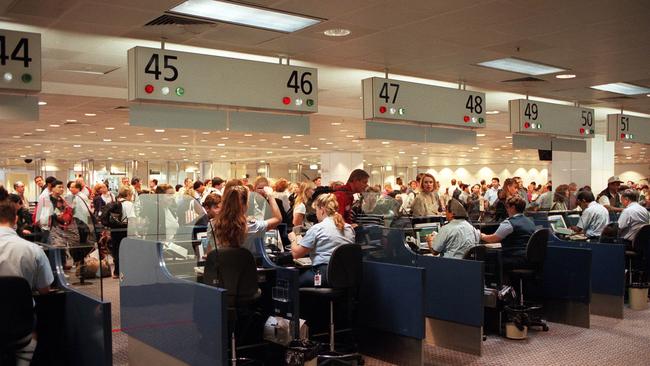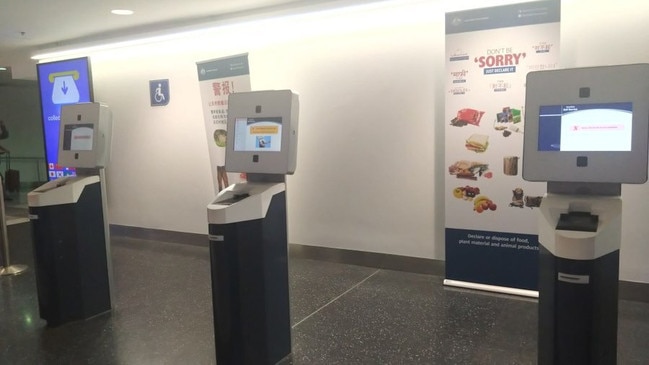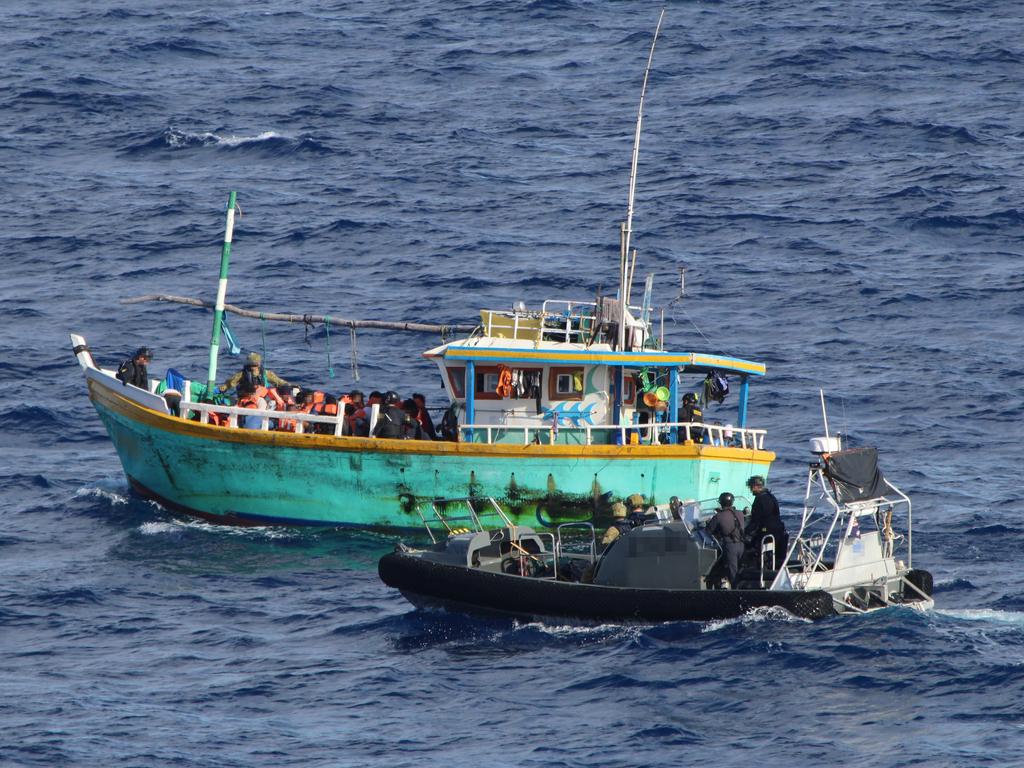Business group ACCI’s call to ditch Australia’s outdated ‘incoming passenger cards’
Paper passenger cards are under fire from a peak business body as a ‘total embarrassment’ to Australia that have to go, along with two other antiquated airport systems.

An influential business body is demanding the federal government axe the incoming passenger card, saying it’s an antiquated embarrassment to the Australian travel industry.
The Australian Chamber of Commerce and Industry said Australia was one of very few countries still requiring overseas visitors and returning residents to fill out a piece of paper on entry, and it was time to move into the 21st century.
Executive chairman of the chamber’s tourism arm, John Hart, said the card was a “total embarrassment” that was likely to deter visitors from returning to Australia.
“We nearly got rid of it during Covid when they had the digital passenger declaration but they stuffed that up so badly they walked away from it,” Mr Hart said.
“I think (visitors) would be more inclined to come back to Australia if they didn’t have a horrible experience moving in and out of the country. We know from reporting on social media those sort of experiences – the incoming passenger card and the tourist refund scheme and the like – get a really terrible reputation and terrible comments from visitors and they’re certainly not returning at the rate we’d like them to be returning.”
The chamber has presented its views on improving the passenger processing system in a report titled Future Traveller Strategy, which will be given to new Home Affairs and Immigration Minister Tony Burke.
Mr Hart said they also wanted to see so-called smartgates overhauled, to incorporate “passenger on the move” facial recognition technology.
“Facial recognition has been trialled. It is incredibly simple to implement and it would get rid of those smartgate machines,” he said.
“It won’t get rid of the gate itself, but when you approach the gate it will just be a matter of facial recognition and away you go. It’s incredibly fast.”
Despite being trialled, a full rollout of the technology is yet to be funded, and there are no plans to do so.

A Sydney Airport spokesman said staff had been working closely with government to make improvements at the border, and there was an opportunity to do more.
“In the second quarter this year during the morning peak, it took almost an hour for arriving international passengers to get off the aircraft and through the border,” the spokesman said. “That’s too long, and we look forward to working with the government and Border Force to improve the experience for international travellers arriving at Sydney Airport.”
Australian Airports Association head of policy and advocacy Natalie Heazlewood also spoke out in favour of the “seamless facilitation of passengers” through the adoption of new technologies.
“While this is a decision for the federal government, any measures to improve efficiency and get passengers moving quicker would enhance the travel experience,” Ms Heazlewood said. “Border processing can create delays in arrivals terminals, particularly when there are Border Force staffing issues, so the AAA would welcome any additional funding to improve these processes.”
Another area in need of attention was the tourist refund scheme, whereby visitors could be refunded taxes paid at the point of purchase on presentation of receipts.
Mr Hart said other countries offered contactless confirmation of payments at the border.
“In contrast, Australia’s system is plagued by long queues at airports and manually completed refund paperwork,” he said.
He proposes that changes to passenger processing be funded from revenue collected by the government, through the sale of passports and visas, and the passenger movement charge (PMC).
As of July 1, the cost of an adult 10-year passport was $398, up from $346, while the PMC climbed from $60 to $70 for every person leaving Australia.
Although the intention of the PMC was to recover costs associated with border processing, funds collected from the tax are now directed into consolidated revenue.
“Tourism is too valuable a commodity to risk losing visitors because of outdated passenger screening and processing methods,” said Mr Hart.
“Between inbound and outbound travel, there is a spend of over $100bn. We should back ourselves to grow international tourism and generate return visitation to our great country.”






To join the conversation, please log in. Don't have an account? Register
Join the conversation, you are commenting as Logout